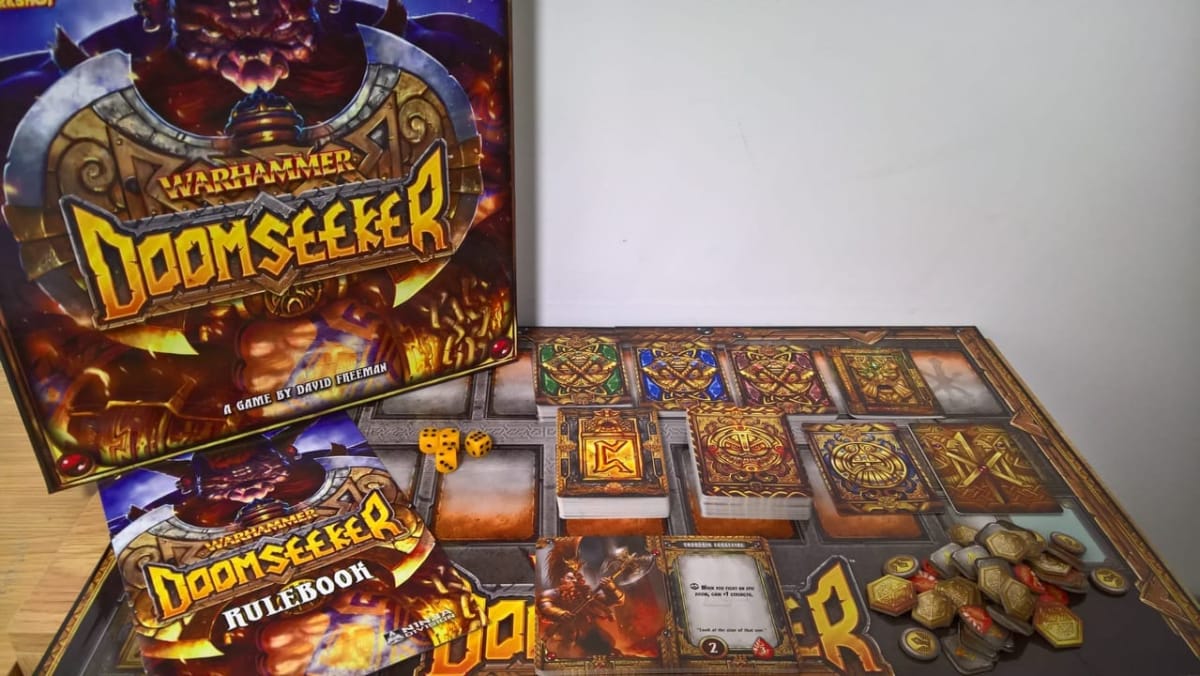Warhammer Doomseeker is a tabletop card game developed and published by Ninja Division and set in Games Workshop's Warhammer setting. It's set in a very specific part of Warhammer's setting, purely about Dwarf Slayers. For those unaware, Dwarves who take the Slayer oath do so to redeem a past misdeed and aim to find a glorious death in combat. There's a whole series of Warhammer Fantasy novels about a famous Slayer Gotrek Gurnisson and his manling companion if you'd like to go deep into the setting.
The first thing I noticed about Doomseeker is that the rulebook is a total of 8 pages, front to back, including cover. Take away the cover page, the rear page components list and the inside cover setting introduction, you're left with 5 pages of rules. Roughly two pages of set-up, two pages of playing the game, and one page of additional rules, which also includes timing rules. The pages are also filled with card images, so there's roughly four pages of writing. This was most noticeable for me, because I spend a lot of time reading rules in order to teach and then test games with my group. After a single read-through, I was ready to play.
When you start playing, it does get a little more complex with the card details, but the timing and actions are very clear, which hugely increases the enjoyment of the game and allows players to get straight into it.
[gallery columns="2" size="large" ids="269847,269848"]
Games of Doomseeker are played on a card gaming mat, which has spaces for all the decks required to play. Players select from one of several Slayers, each with their own special ability. Each Slayer has their own card, which becomes the centre piece for a players own play space, with the gaming board in the centre of all the players. Beside their Slayer, players each take a facedown Grudge card, which isn't revealed until the end of the game. This card gives you extra points for the game's win condition, which is gaining renown points and it isn't revealed so that player's can't play into it.
After players have selected their Slayer, the Doom deck is constructed. There are three levels of Doom, 1, 2 and 3 and each has a rising difficulty. Depending on the amount of players, a select amount of level 3 Dooms are dealt onto the bottom of the deck, then some level 2 Dooms on top, and finally a larger amount of Level 1 Dooms on the top to get players started. Five of these Dooms are then dealt onto the play board for players to battle against.
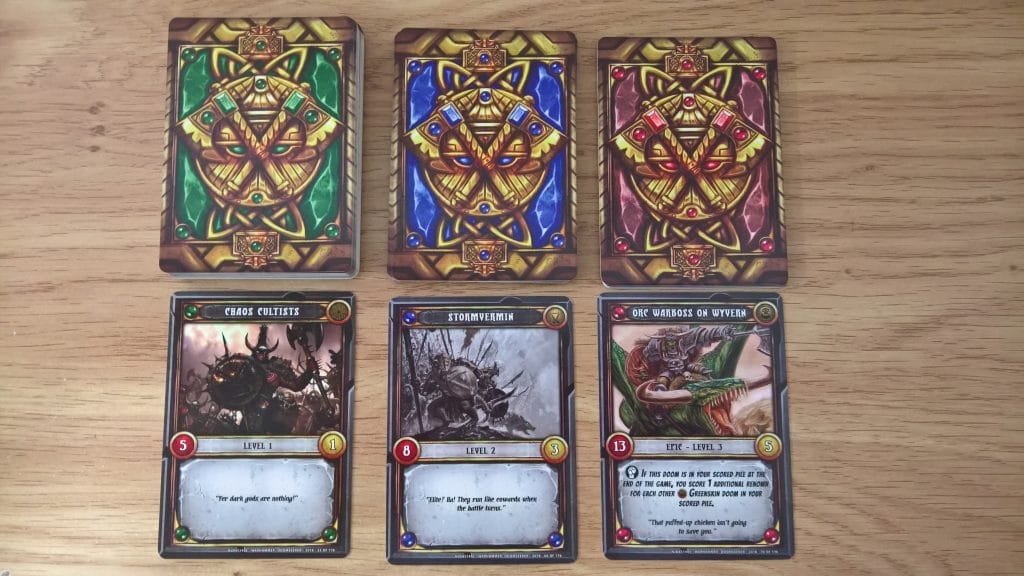
There is also a Fate deck, which players draw a hand of cards from and a treasure deck, which is placed onto the game board, and 5 treasure cards are dealt onto the board from which players can buy weapons and other equipment from.
The player's turn is simply:
- The active player draws a fate card
- They then choose a Doom from the battlefield to face
- Starting with the player left of the active player and finishing with the active player, each player plays a Fate card
- A dice is rolled and the doom is fought, if they win, they get the doom card and the gold reward, if they lose they take a wound
- The active player is then able to purchase treasure cards with their gold
- The active player discards down to 5 cards if required
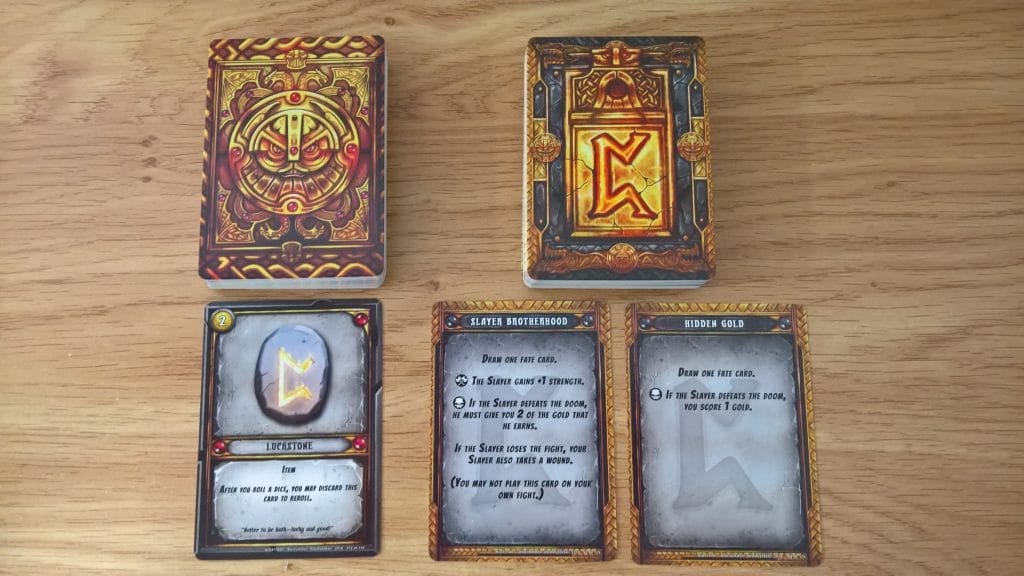
When a Doom is defeated, the player adds it to their scored pile, which is counted at the end of the game to see who has the most renown to find out who's won. Some Doom's have effects that occur when they're in the scored pile, or when they come into play. Such as the Plague Priests, which allow you to draw another fate card at the end of your turn, if you have 2 other Skaven Dooms in your defeated pile.
If there is ever less than five Doom or Treasure cards on the Battlefield, the empty space is immediately filled, so there's always a constant flow of new cards coming into the game.
The real heart of the game is when each player plays a Fate card before one player faces a Doom. Some cards can boost a roll (for you or another player), some cards can negatively affect a roll and some have other effects, such as letting you fight the Doom instead, or forcing that player to fight a different Doom.
Some of the Fate cards played detrimentally affect the outcome of other player's rolls when facing Dooms and while it seems like you're working against other players, it actually feels good-natured. Almost like Dwarf Slayer banter. There's a scene in a Slayer novel before the End Times (before Warhammer became Age of Sigmar) where one Slayer pushes another out of the way to face a monstrous threat, because he wants the grand end and this is what comes across when playing Doomseeker.
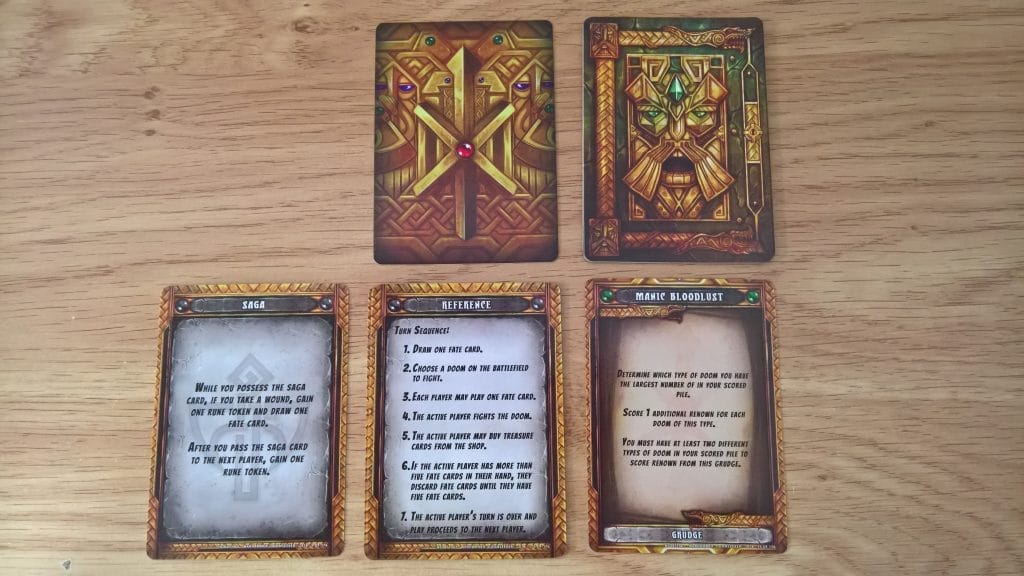
I've been involved in some discussions in the last year about having fun while losing when playing games. How when two players sit down to face each other at a wargame table, one of them has to lose, and it doesn't always feel great to do so. When playing an RPG, because you're working together to create a story, even when you character dies, you can still have fun doing it. Doomseeker goes some way to achieving this. Even though you're playing against your opponent, it's not always obvious who's winning until the Grudge cards at the end have been revealed. Once the winner has been worked out, I never once had the defeated feeling you can sometimes get from losing competitive games. This might change if I were to play Doomseeker in a tournament against players I didn't know, but when playing with friends, Doomseeker is a blast.
Doomseeker can get complex during the game however, when there's lots of card to keep track of, and not all are obvious. Cards in your defeated pile for example can still have an effect on the game, so occasionally cycling through them to check and leaving ones that have an effect to the side is required. Cards coming into play on the Battlefield can also sometimes be missed in the heat of the game, as it is quite fast paced and reigning that pace back does feel at odds to the game itself. With four players it does get quite complex in terms of in-game effects, but the turns, available actions and timings are so straight-forward that it does balance out.
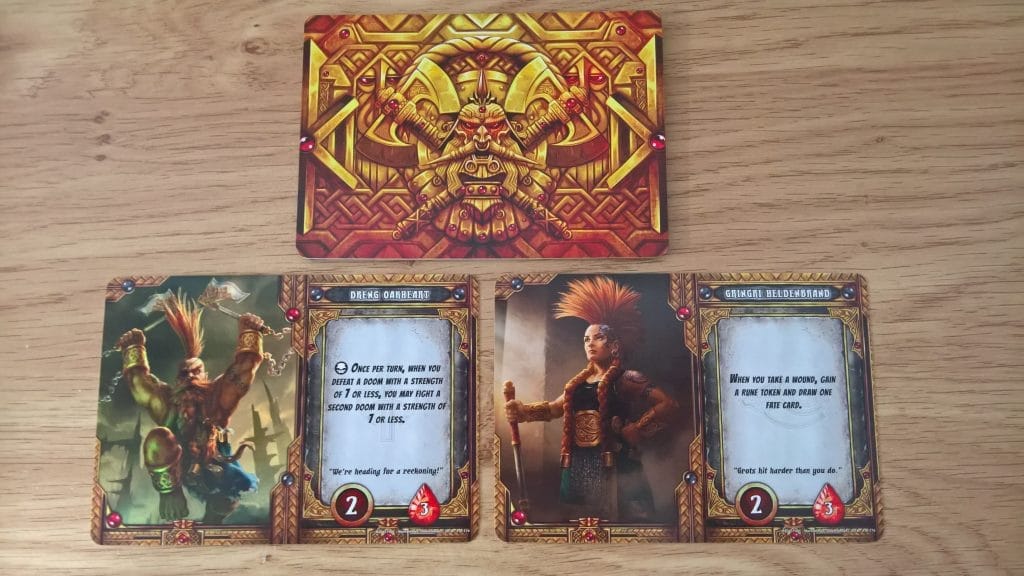
Doomseeker is fast flowing and it feels like there's always something happening. Everything is very simple in terms of working out, especially the combat which is very straight-forward. There is a high element of luck in what cards you draw and the single dice roll (with one re-roll if you have a Rune token to discard), so it's not a completely balanced game with a huge amount of strategic tactics. The Slayers themselves are also not balanced, they all have the same Health and Damage score and some abilities are useful throughout the game, others only useful at specific points, but it's not aimed at the competitive market and as long as you understand that going into the game, there's still lots to enjoy.
Ninja Division have done a great job with the components and it all feels incredibly Dwarfish. The artwork on the Slayer cards is great and the card backs and game board all do a solid job of theme immersion.
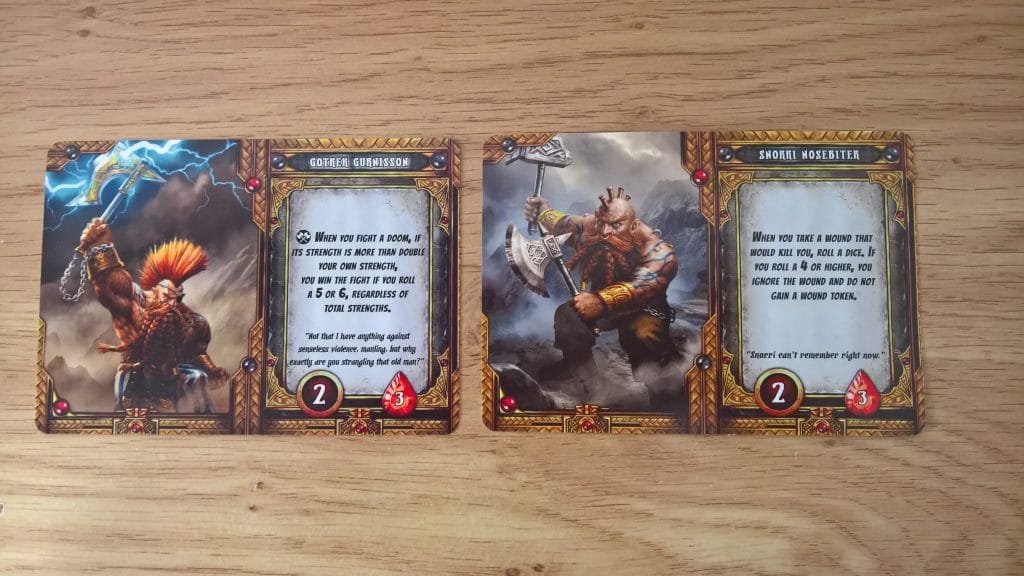
The Bottom Line:
Doomseeker is a compact, fast, well produced card game. It's fun and extremely thematic. There's not a lot of tactical strategy involved, so if that's what you want from a card game then this probably isn't for you. But if you want a fun multiplayer game that you don't need to win to enjoy, then this is a great fit. Fans of Warhammer Fantasy, especially Dwarves will find a lot more enjoyment with Doomseeker, but those seeking a balanced competitive game probably won't. There's some complexity in Doomseeker during the game, which hampers the fast pace a little, but if you don't take it to seriously, there is a lot of fun to be had.
Get this game if:
You love Warhammer Dwarfs, especially Slayers
You enjoy a good natured verses game.
You like fast paced card games with a little complexity.
Avoid this game if:
You want a balanced competitive card game.
You want deep strategy and positioning in your game.
This copy of Doomseeker was provided by Ninja Division.
Have you played Doomseeker? What did you think? Are you a fan of Warhammer Fantasy Battle or the settings? Do you think the components convey the theme well? Let us know in the comments below.
Where's the score? The TechRaptor tabletop team has decided that the content of our tabletop reviews is more important than an arbitrary numbered score. We feel that our critique and explanation thereof is more important than a static score, and all relevant information relating to a game, and whether it is worth your gaming dollar, is included in the body of our reviews.
Review Summary
Have a tip, or want to point out something we missed? Leave a Comment or e-mail us at tips@techraptor.net
